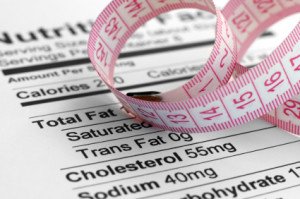 Chronic kidney disease is a condition marked by the gradual loss of kidney function. Like most chronic conditions, kidney disease is broken up into stages of progression. Each stage is marks the progression of chronic kidney disease and level of kidney function.
Chronic kidney disease is a condition marked by the gradual loss of kidney function. Like most chronic conditions, kidney disease is broken up into stages of progression. Each stage is marks the progression of chronic kidney disease and level of kidney function.
What are the stages of chronic kidney disease?
Chronic kidney disease is broken up into five stages based on severity and other key indicators decided by the National Kidney Foundation. These stages help doctors determine what tests and/or treatments to use.
The main indicator of what stage a patient falls into is usually factored with the patient’s creatinine level, which is the measure of how much waste is in the blood. This result, along with the patient’s age, gender, and race, can help to distinguish what stage of chronic kidney disease the patient is in.
Stage One
The first stage of chronic kidney disease does not usually have symptoms and is typically only diagnosed if the patient is being tested for other conditions. It is diagnosed by blood results that include the creatinine values.
Stage Two
The second stage of chronic kidney disease is also fairly benign. There are typically very few symptoms, such as a slight amount of blood in the urine and is usually only diagnosed if blood work is ordered for another condition. At this stage, kidney damage might show up in a MRI or CT scan if one happens to be done.
Stage Three
The third stage of chronic kidney disease is when kidney damage becomes the most apparent and is symptomatic.
Symptoms that indicate stage three typically include fatigue, kidney pain, fluid retention, and urinary problems. Often diet changes will be highly recommended and the patient will need to have regular blood tests to monitor creatinine levels.
Stage Four
Stage four kidney disease is referred to as advanced kidney disease and typically occurs with an increase in symptoms, adding nausea, sleep and concentration problems, bad breath, and nerve problems such as tingling in the extremities.
This is the stage of chronic kidney disease where the patient and their doctor will make decisions about treatment such as dialysis, and maybe even start discussing transplant options. Fluid intake and creatinine levels are closely monitored, and strict dietary changes are often required.
Stage Five
Stage five chronic kidney disease is the most advanced stage, often referred to as “end stage renal failure”. Patients often suffer from a myriad of symptoms that affect the entire body. At this stage, patients attend routine dialysis and discussions about transplants are expected.
How quickly does chronic kidney disease progress?
The timeline of progression for chronic kidney disease depends on the patient, and also how well the patient takes care of him or herself. Patients that closely follow dietary recommendations and keep their blood pressure down can effectively slow down the progression of chronic kidney disease.
Chronic kidney disease is a condition that is measured in stages of severity. These stages can be slowed, in most cases, and the progression of the disease delayed. Talk to your doctor about how you might slow the progression of chronic kidney disease.
If you or a loved one has chronic kidney disease, please check out my sister site all about chronic kidney disease.
Speak Your Mind